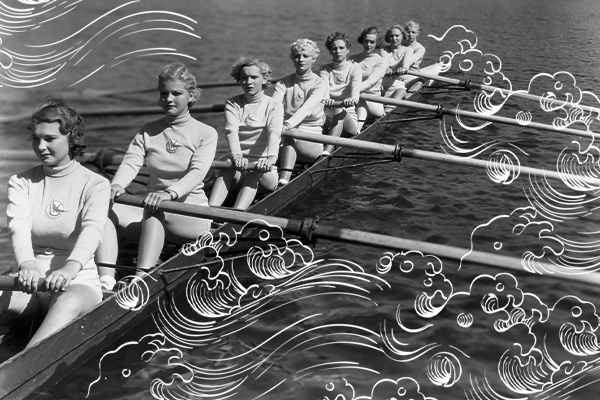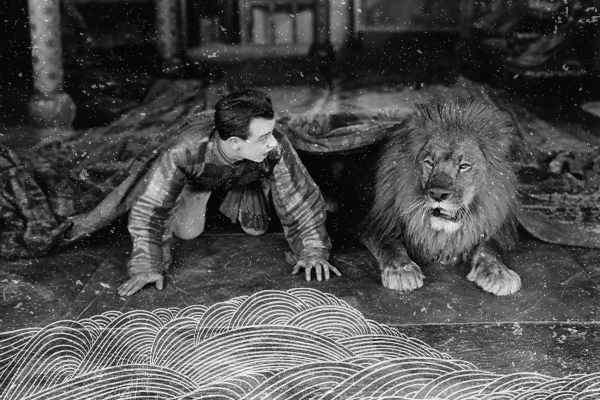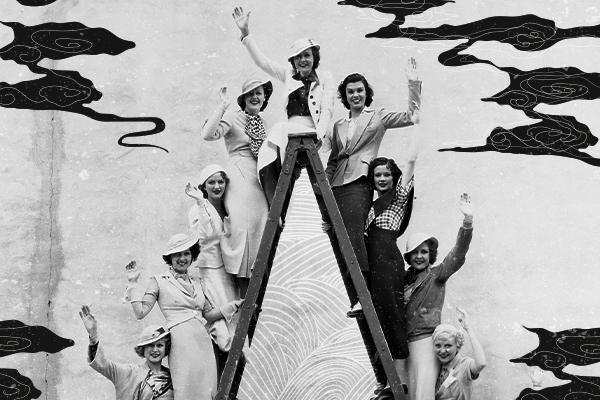We usually know when we are in the presence of greatness, or when we’re witnessing a great accomplishment. But ‘great’ can be difficult to pin down.
Great sporting achievements – athletics records, for instance – are regularly surpassed, even if only decades later. And, as centuries pass, society’s frame of reference requires re-evaluation of great political leaders through a clearer lens of history. As just one example, Catherine II of Russia dragged her country into modernity, but ruled in a ruthless manner that would never bestow her with the mantle of ‘Great’ in today’s world.
Still, there are certain identifiable characteristics of high-performance team excellence which are common across disciplines of human endeavour – including at work.
One of the leading thinkers on work-related performance is Morten Hansen, management professor at the University of California, Berkeley. His seminal book Great at Work: How Top Performers Do Less, Work Better and Achieve More, incorporating findings from his research of 5,000 managers and employees across various industries, encapsulates the “smart” principles adopted by the very best workplace performers.
Many of these are individual behaviours, but the concepts apply equally to the high-performance functioning of teams, and entire organisations. So perhaps a good place to start is to think about the power and potential of great teamwork.

What does teamwork look like when it works?
“It’s a completely different psychology swimming on a team [to] swimming as an individual,” enthused the commentator after the Australian team surged to victory in the women’s 4x100m freestyle relay at the recent Tokyo Olympics. “We’ve seen so many times over the years [that] the best times – hugely best times – within a team environment can’t be repeated when they swim on their own!” Specific sports-science studies confirm technical reasons – but they also acknowledge the influence of affiliation-linked motivation and inspiration.
What’s occurring here is “P-Squared”, Hansen’s term for the combination of energy and willpower that ignites when passion meets purpose. The purpose – chasing victory in the swimmers’ case – seems to heighten each individual’s performance. Hansen’s context is different, but his words apply perfectly: “They feel what they do is more meaningful because it’s not only about themselves — it’s about what they contribute. They’re more dedicated to their job every hour. They’re paying more attention. They’re more in flow.”
Being inspired to help, in some valuable way, pushes us to perform at our absolute best. It propels us to do great things. Like the new world record that the Australian women set in that remarkable swim.
"100% of myself is nothing compared to 1% of the team."- Eliud Kipchoge, world recordholder and the only man to ever run the marathon in under 2 hours .
Who are the people on my team ?
We should note that the very nature of what it means to be part of a team is changing. As organisations move away from hierarchical structures, and adopt flatter or networked ecosystems, so teams and teamwork is evolving so as to improve collaboration, problem-solving agility, rapid scaling of innovations, and overall customer-centricity.
There’s a watch-out here: these objectives aren’t automatically met. There’s a need for cohesive leadership. (And the two together – cohesive, leadership – cannot be assumed.)

A tragic story from the world of medicine illustrates. In March 2005 in Birmingham, England, Victoria Bromiley went in for routine surgery. She never returned home. The subsequent investigation revealed fundamental – yet human – flaws in the behaviours and protocols of the surgical team. Here are three areas:
In any team, knowledge is dispersed. So, all team members should be able to contribute fully. Equally, it behoves leaders to encourage an environment of openness and trust so that even the most junior member is not afraid to speak up. (In this instance, even the experienced surgical ward nurses did not feel adequately respected or trusted to voice, early on, what some of them saw was happening, nor to suggest intervention options.)
Clear authority leads to decision-making responsibility. At one point, as the situation escalated into an emergency, there were three senior surgeons and two anaesthetists in the theatre. They were not all known to one another, nor was there any clear seniority ranking. As the crisis unfolded, decision-making became increasingly haphazard: some suggestions were acted upon immediately without due consideration, others were mulled over too long as – having seen the consequence of rash action – consensus was prioritised over action. There was no natural leader, and so none of the doctors took responsibility.
The importance of basics. The enquiry underscored the importance of physical checklists to ensure all instruments – and the surgeon’s preferred options – are at hand, and in the right order.
So we see that working cohesively is a baseline requirement for delivery, and that cohesion and leadership are intertwined. How a team functions is inextricably linked to an organisation’s culture, which is the sum of all the ways in which its people are expected to behave.
“Perhaps the most important role of a leader is to know the goal and shape the team’s direction, and then to listen – without ego or fixation – in the collaborative quest to do what must be done.”
How does the power of team cohesion pull us to success?
Even weekend warrior cyclists who hit the road in a small group of friends will have experienced the power of working together. (And the more unfit, the more help is needed!) Professional cyclists have perfected this in the peloton, using the massed momentum of a bigger bunch to easily chase down breakaways, to resist heavy crosswinds, and to conserve strength by taking turns in putting in maximum effort.
There are multiple teamwork metaphors and learnings from this particular aspect of cycling – not least that even in pursuit of individual rewards we benefit from, or need the help of, others. Literally, if we pull in the same direction, we pull one another along.
But, have you also noticed how the peloton’s functioning demands the cyclists ride within centimetres of one another, keeping extremely tight despite the fact that this adds danger? This requires absolute faith. They must trust one another, if they want to achieve high-performance.
How do effective teams provide a safe environment for high-performance?
Trust is hugely important for great teamwork. Trust allows team members to share their vulnerabilities, such as their concerns about clear challenges – or their intuitions. Not only does this openness prevent problems or minimise effects, but it also heightens mutual accountability, facilitates respectful conflict where required (as opposed to avoidance), and fosters deeper further collaboration.
It’s at the heart of the individuals’ self-belief and the collective belief of the team, illustrated in our Boys in the Boat: Rowing for Gold and Toto, Lewis , Mercedes! Full-throttle Performance case studies.
In the business world, an excellent illustration is how Netflix’s founder and CEO Reed Hastings devolves decisions.
“With the company’s density of talent in place, innovation is best served by allowing people maximum autonomy,”
Reed Hastings, Netflix CEO
Why diversity and inclusion are catalysts for high-performance teams

Let’s zoom out for a moment. A wider debate, made more urgent by the pandemic’s triggering of a socio-economic crisis, is the need to tackle deep-rooted systemic flaws in our economic system. The solution has been identified: inclusivity is the foundation for improved and more equitably dispersed economic growth. Studies prove the performance and growth gains which inclusivity brings. One of the most powerful and recent of these reports, McKinsey’s April 2021 The case for inclusive growth, highlights that – in the US alone – narrowing the existing wealth gaps between white and Black or Latino households could add $2.8 trillion to the country’s GDP, and unlocking further employment opportunities for women could augment GDP by another $2.1 trillion by 2025. Imagine what the numbers would be for the world as a whole!
So, genuinely diverse teams blend skills and styles; knowledge and experiences; identities, demographics and psychologies. They will outperform teams without these characteristics.
“Truly great performance is more likely to occur when the organisation also goes the extra mile to embed inclusivity in its culture and actions.”
How does collaboration within teams contribute to success?
Friendly with your work colleagues? Great!
Let’s go back some 200,000 years. Anthropology professor Brian Hare claims that Homo sapiens survived through ‘prosociality’. Amicability, as a vital adaptive trait, established the basis for cooperation. Our distant forebears developed early cognition, eventually including language, from that starting point. And so collaboration – the natural result of positive, friendly intent – has been an anthropological driver behind human progress.
But even with the best of intentions, collaboration can go awry. Hansen points out something that may seem counterintuitive: that over-collaboration can also be problematic. The point is to be disciplined in our collaboration. “Find the few things that matter the most and collaborate on them,” he says.
Issues of culture can also constrain collaboration. In her book Anthro-Vision: How Anthropology Can Explain Business and Life, Financial Times editor-at-large Gillian Tett tells the story of late-1990s attempts at General Motors to design new, smaller vehicle models. The ailing conglomerate thought innovation would be spurred through collaboration across various geographies and with the involvement of an external partner. But the team couldn’t even agree on the underlying purpose of meetings. The individualistic American unit thought they were to thrash out technical problems; the headquarters’ representative wanted to explore further options and drive timelines; the German partner assumed they were to rubber stamp a consensus already reached.
This wasn’t about something as straightforward as a meeting agenda. The lack of a unified culture meant that GM was beset by different “tribes”, as an internal mediator put it. Collaboration, then, much like cohesion, isn’t always straightforward.
Why do great people never stand still?
“A by-product of being great at work is that success breeds success.”
As individual self-belief grows, and the organisation garners collective accomplishments, ambitions can be stretched further. There is likely to be a strong motivation to do even better, and leadership is likely to invest further in augmenting resources, sharpening talent capability, and incubating innovation.

Irish rock band U2, the subject of another of our LRMG case studies, is an ongoing example of how solidifying success, rebuilding, and reinventing, creates a legacy. Lead singer and frontman, Bono, continues to astonish, sharpening his edge in different ways. Fairly recently he even founded an investment fund, TPG Rise, with a mission to gear economic inclusivity and upliftment. He understood that the global investment community – holding the financial levers – are vital players in engineering meaningful change.
How does doing great work affect the world around us?
In its recent book Global Productivity: Trends, Drivers, and Policies, the World Bank gives a sobering breakdown of how, even before the Covid pandemic, the world’s labour productivity had been slowing for a decade. The deeper concern is that “productivity growth in emerging markets and developing economies (EMDEs) and low-income countries (LICs) is the main source of lasting per capita income growth, which in turn is the primary driver of poverty reduction.” The book points out the necessity of social and infrastructure investments, as well as “the critical role of human capital accumulation.”
In a very real sense, then, we should aim for excellence at work as our contribution to economic and social global progress.
Why building the right environment is vital for high-performance
“If you want to go fast, go alone; if you want to go far, go together.” African proverb

